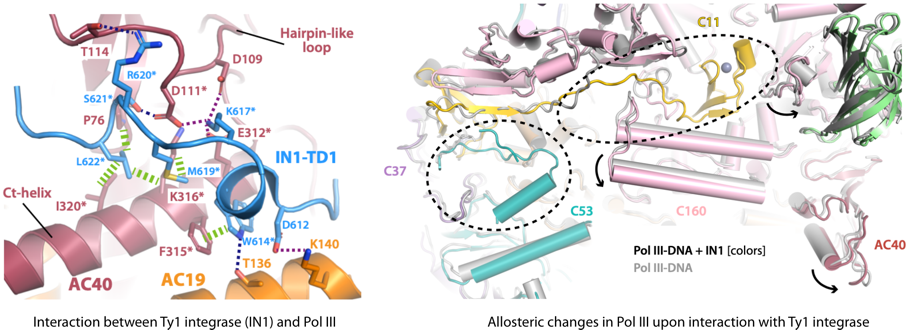Transposable elements are DNA sequences that can change their position within genomes. Their movement drives the development of new cellular functions, but it can also produce harmful mutations. To minimize deleterious effects, retrotransposons insert into safe regions of the genome through tethering of their integrase to proteins operating on the chromatin. Ty1 is the most abundant and active LTR-retrotransposon in yeast. It replicates by reverse transcription of its genomic RNA into cDNA, which is then inserted at new genome sites by the Ty1 integrase. Ty1 inserts at nucleosomes upstream of RNA polymerase III (Pol III)-transcribed genes, which are considered safe genomic regions.
We characterized the catalytic activity of the Ty1 integrase and showed that its N-terminal region, including the catalytic domains, is folded and stable, while its C-terminal region is partly flexible [JBC, 2022]. We used cryo-EM to show how a C-terminal segment of the Ty1 integrase docks into a crevice on the Pol III surface, thus inducing a recycling-prone configuration in Pol III that likely increases its residence on the chromatin [Nat Comm, 2023].


